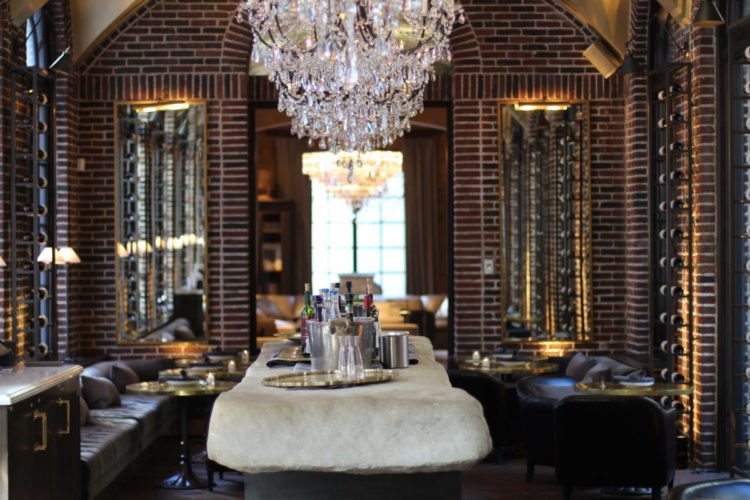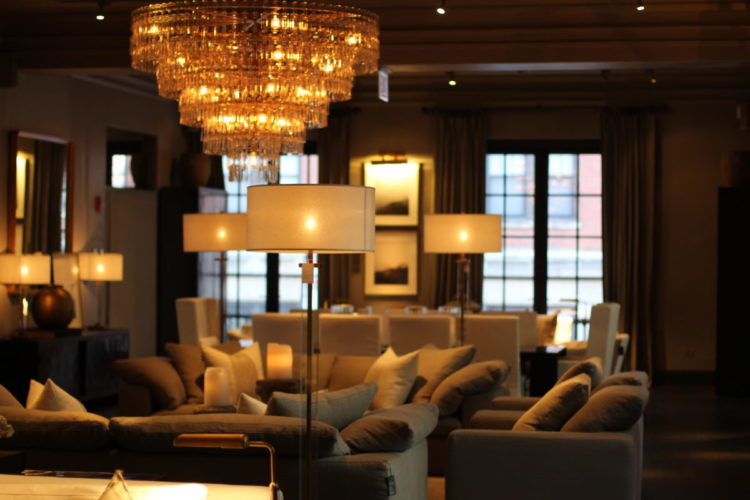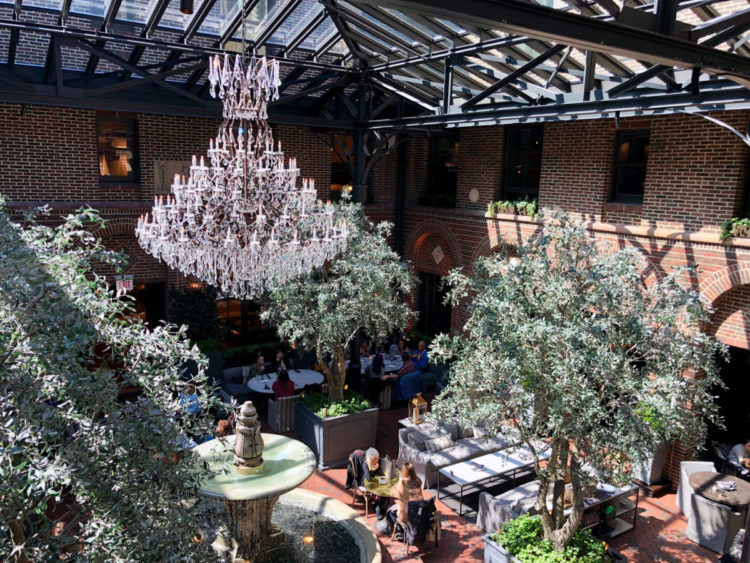

Today, Restoration Hardware (now known as RH) is recognized for its high-end furniture with a price tag to match. When walking into a store, consumers can expect to see elegant yet minimalist room set-ups, intricate light fixtures, and sky high prices. RH cafes, bars, and restaurants, take the stores’ experience one step further. At these locations, consumers wander the various floors while sipping wine, or eating brunch on pristine RH white couches. Surprisingly however, RH wasn’t always a luxury brand. With RH’s esthetic today, it is easy to overlook their humble beginnings, but their rebrand is one worth noting.
RH founder, Stephan Gordon, had a unique fascination with taking high quality antiques and bringing them back to life. Restoration Hardware came to life in 1979 when Stephan and his wife were renovating their Victorian home. In an early interview with Fortune, Stephan explains how he was unable to find the hardware, moldings, and fittings he needed for their home in any hardware store. Instead, he was forced to hunt for them in obscure and pricey shops, until one day, Stephan’s entrepreneurial spirit came alive.

Stephan put together a binder with photo copied catalogue pages of items he liked, and had a “Restoration Hardware,” sign made to hang on his porch. His business model was simple. Customers would come and order items from his binder. If a customer ordered four door knobs, Stephan would order eight. Then he would sell the customer their four door knobs for double their original price, and this would finance the four door knobs Stephan kept for himself. Simply, Restoration Hardware began as a way for Stephan to finance his home renovations, and nothing more. There was no intention to create a luxury brand.
After six months, Stephan realized that Restoration Hardware had the potential to become a true business. So, he decided to rent a storefront and invest in one of each of several items for display. The store officially opened in 1980 and quickly became a word-of-mouth success.

14 years later in 1994, Restoration Hardware made the well-known switch to selling home furnishings rather than hardware products. Stephan chose to focus on selling unique, high-quality furniture to differentiate his brand from other furniture stores that he believed sold only mass-produced pieces. This was obviously a huge change for the company’s business model, but it was an informed switch that moved the company into a more profitable category.
Since the switch in their product offerings, RH has implemented other, less drastic yet still important, changes that don’t get as much attention. When the company made the switch to sell furniture, they did not instantly become the luxury brand they are today. Some readers may remember the days when RH had similar products, prices, and buyer personas as brands like Pottery Barn or Crate and Barrel. In late 2010, RH changed its focus to go “upmarket”. They began focusing on gallery items that were much more expensive, to distinguish themselves from competitors. RH also differentiated itself from competitors who mainly design their furniture in-house, by creating partnerships with outside designers and artists to help produce some of their lines.
As the look of RH products evolved, expansive cafes and restaurants were created around select stores, creating luxurious experiences to supplement RH products and their brand identity. This was a strategic decision for RH which has been a market disruptor since entering the furniture market. These cafes and restaurants are allowing RH to reinvent the traditional brick and mortar concept These special RH locations can only be found in select cities, including New York, Chicago, Toronto, Yountville, West Palm Beach, and Nashville.
RH Chicago opened in 2015 with an accompanying cafe called 3 Arts Club Cafe. To see the true transformation of RH’s brand, and understand the experience they are trying to curate, I went to RH 3 Arts Club Cafe for brunch. Although I had never been before, it felt like I had from all of the photos I had seen on social media. Many people likely feel this way because according to MarketWatch, within 2 years of opening, 3 Arts Club Cafe was the 7th most Instagrammed cafe in the country and over 50 marriage proposals had occurred there.
Upon arriving, I realized just how large the space truly is. The vast cafe extends up 5 floors with a glass ceiling, fountains, and chandeliers. Once you have secured a drink or food, you are free to walk around the store. Each level contains a different set of furniture, including bedroom, bathroom, kitchen, kids/teens, etc. There is even a rooftop deck to showcase RH patio furniture. Before this trip to RH, I had no idea that the space was so open for people to not only walk around but also to sit and work. I passed several groups having business meetings over coffee while sitting on RH couches and chairs. It seemed that some people treated the store as an open workspace.
The cafe certainly accentuates the elegant feeling of the store and all of the products, however, unlike traditional stores, it allows you to sit and eat on the furniture as you would at home. While creating a beautiful and Instagram-worthy atmosphere, the cafe actually makes the high-end furniture pieces feel more tangible and livable. It is an interesting concept and certainly drives a lot of foot-traffic to their locations.

From humble beginnings to transforming into a luxury brand, RH has affected its fair share of change over the years. But brands that wish to evolve like this, must be cautious. RH is certainly serving a very different customer base now than they were back in 1980 when selling hardware. Evolving a brand in this way can be a great strategy to stay relevant over the years, but what makes rebrands successful, is a solid understanding of your new ideal customer, and how to cater to your new products or services toward them. Introducing cafes and restaurants to supplement the RH brand with experiences, was a smart way for the brand to show consumers what the RH brand has become.